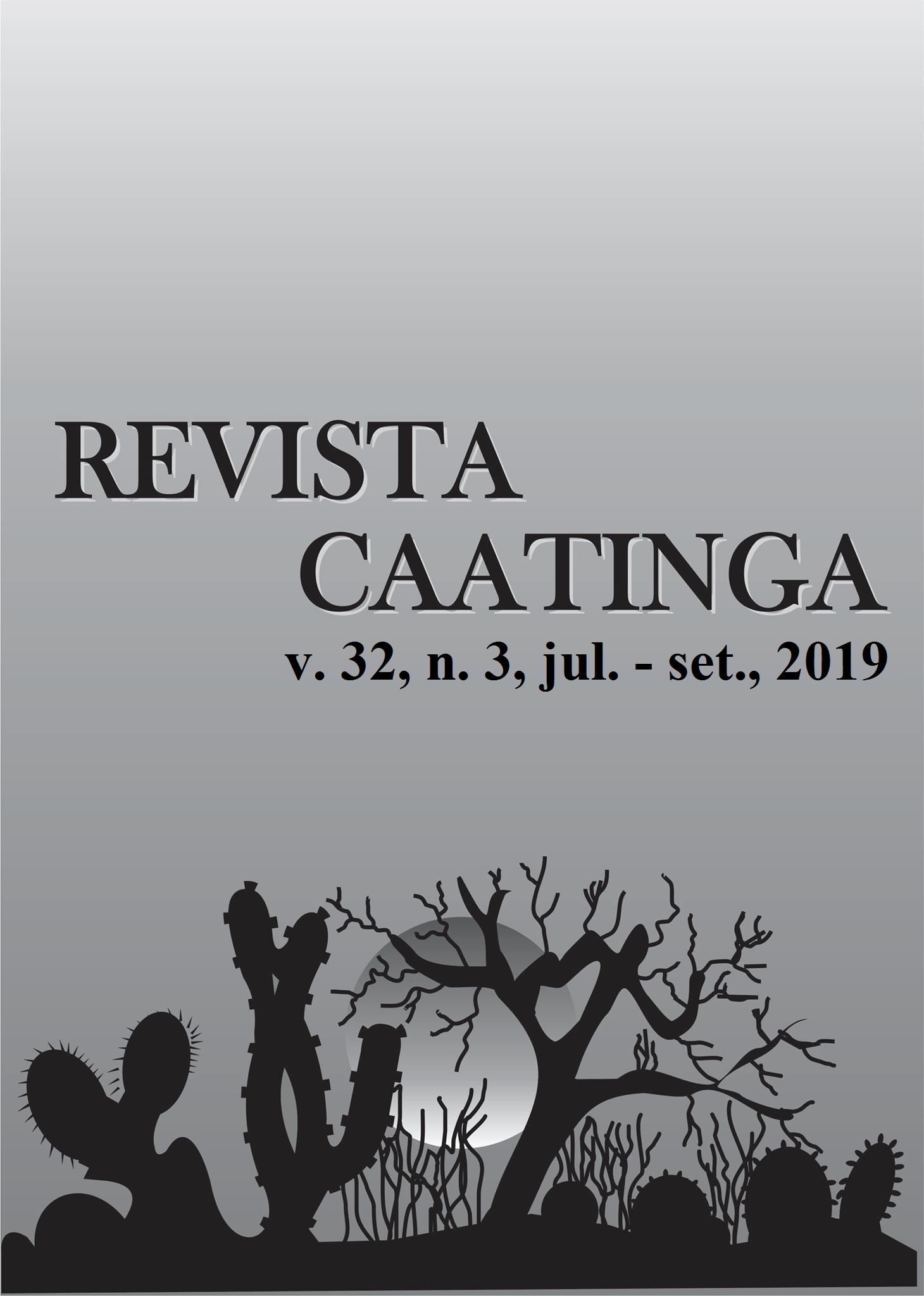WATERMELON YIELD AND EFFICIENCY OF USE OF WATER AND NITROGEN
DOI:
https://doi.org/10.1590/1983-21252019v32n321rcKeywords:
Citrullus lanatus. Fertigation. Irrigation.Abstract
The evaluation of the yield of crops and their efficiency of use of water and nitrogen is essential to optimize the management of production factors. The objective of this study is to evaluate the effect of irrigation regimes and nitrogen doses in fertigation on fruit yield and efficiency of use of water and nitrogen by the Top Gun watermelon hybrid. The study was conducted in Bom Jesus, Piauí, Brazil, from August 4 to October 15, 2015. The study used a completed randomized block design with four repetitions, five irrigation depths (110.17, 156.86, 221.16, 268.87, and 317.09 mm), and five doses of nitrogen in fertigation (0, 50, 100, 150, and 200 kg ha-1 applied as urea). Fruit yield and water use efficiency were not affected by nitrogen doses; however, there was a significant interaction of the factors for the efficiency of nitrogen use. The highest yield (39,549.45 kg ha-1) was obtained using 233.48 mm of water during the growth cycle. The water depth that promoted the maximum efficiency of water use was 110.42 mm, and nitrogen use was most efficient using 232.21 mm of water and 50 kg ha-1 of nitrogen.
Downloads
Downloads
Published
Issue
Section
License
Os Autores que publicam na Revista Caatinga concordam com os seguintes termos:
a) Os Autores mantêm os direitos autorais e concedem à revista o direito de primeira publicação, com o trabalho simultaneamente licenciado sob a Licença Creative Commons do tipo atribuição CC-BY, para todo o conteúdo do periódico, exceto onde estiver identificado, que permite o compartilhamento do trabalho com reconhecimento da autoria e publicação inicial nesta revista, sem fins comerciais.
b) Os Autores têm autorização para distribuição não-exclusiva da versão do trabalho publicada nesta revista (ex.: publicar em repositório institucional ou como capítulo de livro), com reconhecimento de autoria e publicação inicial nesta revista.
c) Os Autores têm permissão e são estimulados a publicar e distribuir seu trabalho online (ex.: em repositórios institucionais ou na sua página pessoal) a qualquer ponto antes ou durante o processo editorial, já que isso pode gerar alterações produtivas, bem como aumentar o impacto e a citação do trabalho publicado (Veja O Efeito do Acesso Livre).







